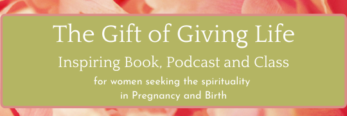What? know ye not that your body is the temple of the Holy Ghost which is in you, which ye have of God, and ye are not your own?
1 Corinthians 6:19
I have been pondering for some time now the symbolism of the temple and birth. In fact, I had been trying to write an essay for the book on this topic last year but I struggled with the depth of the symbolism and how to present it. In the book, the essays “The Two Veils” and “Birth in Remembrance of Him” have thoughts related to this topic. Part of the reason I abandoned the essay was that there was a lot of crossover with those two essays. However, I thought I would still share a portion of my thoughts on this topic as I studied to write it.
My mother gave me the book The Hidden Christ by James L. Ferrell. In his book, on pages 97 through 109, he presents some beautiful insights about the way ancient temples were constructed and the significance and symbolism of the the details by which this was done. I put together a table comparing the symbols and their significance to us.
| Elements of Ancient Temples/Tabernacles | Parallel Elements of Spiritual Deliverance/Priesthood (Ferrell 103-104) | Parallel Elements of Physical Birth/Motherhood/Womanhood |
| Outer Courtyard | The world | Leaving behind maidenhood |
| The altar | Sacrifice of a broken heart and contrite spirit | Sacrifices made to give life. (See this blog post for thoughts on that.) |
| The brazen sea | Baptism | Born of water. Coming forth of the amniotic fluid also called the bag of waters |
| The Holy Place | The straight and narrow path (2 Ne. 31:17-18) | The straight and narrow birth canal |
| The candlestick/lamp stand | The Gift of the Holy Ghost | The gift of the light of Christ at birth. (See this blog post for more thoughts on this.) |
| The table of showbread with bread and jars for drink offerings | The Sacrament of the Lord’s body and blood | Shedding of blood in order to give life (menstruation). Giving of body to form life and the shedding blood in giving birth. Blood and water combined to form breastmilk to nourish babies. |
| The altar if incense, which lifted incense heavenward | Sacred ordinances culminating in the holy order of prayer | Sacred sacraments of intercourse, conception, and pregnancy, culminating in birth (all of which take place within the woman). |
| The veil, with embroidered cherubim | The veil separating us from the Lord’s presence, through which only the sanctified can pass. | The first veil through which we pass at birth leaving the Lord’s presence. |
| The Holy of Holies | Eternal life in the celestial kingdom | Mortal life necessary to achieve eternal life in celestial kingdom |
| The mercy seat and ark of the covenant, with stone tablets containing the Ten Commandments | The throne of God in the middle of kings and queens, priests and priestesses | The giving of mortal life is a crowning event in becoming queens and priestesses. (Where giving physical life is not an option, there are many ways to participate in giving life.) Giving mortal life is a preparation for eternal life and exaltation. |
Notice that in the second column, most of the elements depend mostly upon the priesthood while in the third column the elements depend mostly upon women exercising the power of God. It is also obvious that the two are interdependent. One without the other cannot be enlarged upon. I welcome some help here too. I know that my thoughts are incomplete and maybe you have something you could add.
I leave you with this poem “If Birth Were a Temple” that Talk Birth shared a few months ago:
If birth were a temple
my body is religion, and this small form
twisting out of me,
is
prayer
my cries
reach birth’s vaulted
ceilings,
arching like my back over holy
waters,
crystal clear salt of amniotic
my womb–a blessing bowl
releases
her treasure.
–Nane Ariadne Jordan
This beautiful poem came from an anthology of prayers and readings called Talking to Goddess, edited by D’vorah Grenn.



This is so great. I have been pondering on these things for a long time, but I haven’t drawn al the clear analogies like you have between the priesthood and motherhood. Adding the physical qualities of the temple/tabernacle just opened my eyes to even more!
One thing I would add/correct, though, is your spelling of the straight and narrow path. The spelling used in 1 Nephi 8:20 and 1 Nephi 31:17-18 (probably other places as well) is strait, which does not mean the same thing. It means strict, constricted, limited or narrow (like the Strait of Jabralter, eg). I hope this adds some additional meaning to your scripture study.
And also, I’m no expert, but I don’t think the birth canal is straight as an arrow. Strait is probably a better spelling choice for the analogy as well 😉
Theresa, thank you. I love how the word “strait” gives it more depth and meaning. I love pondering that.
I love the side-by-side comparison, Robyn. I think it is extremely useful to see how all the temples parallel like that.
The Maxwell Institute breaks down the whole “strait/straight” issue here: http://maxwellinstitute.byu.edu/publications/jbms/?vol=12&num=2&id=323
Thank you for the great article Rocky. Love the insight that it brings. Thank you again for your thought-provoking essays.
Pingback: Definitely a Miscarriage – Thursday through Friday Journal | The Gift of Giving Life
Pingback: Birth By the Numbers Part 1 | The Gift of Giving Life